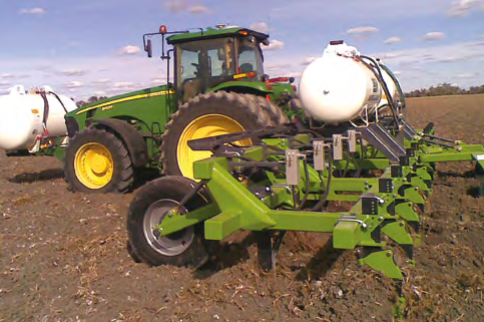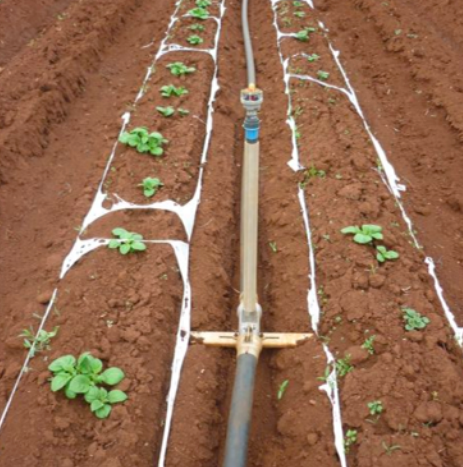Review bacterial Blackleg disease and R&D gaps with a focus on the potato industry
This 2018 report looks at the available literature and information regarding species present in Australia. It also investigates the accessibility of accurate diagnostic tests.
James Addison and cover crops
In this video, Tasmanian grower James Addison discusses the value of cover cropping in maintaining soil health and increasing productivity in potato production.
What is Compost Worth? Using Compost in Australian Vegetable Systems
This case study outlines the economic considerations when using compost in vegetable production systems. It is based on lessons learned from several Soil Wealth and Integrated Crop Protection (ICP) demonstration sites, during the period 2014 to 2016.
What is a cover crop worth?
Have you been thinking about implementing cover crops on your property? Would you like to know more about how they can interact with your farm’s natural systems? What they cost? what benefits they can create? Read this Soil Wealth Integrated Crop Protection factsheet that goes into the economics of cover crops and what they can do for you.
Tomato potato psyllid
This fact sheet from the Department of Agriculture and Food WA covers why It is important to be vigilant for signs of the pest and report suspect tomato potato psyllids.
Review and update of the national standard for certification of Australian seed potatoes
Certified seed potatoes underpin the potato industry. In 2017 a comprehensive review of existing documents, industry consultation and feedback was used to review and update the Australian National Standard.
National governance framework for Australian seed potato certification: An options paper
This Hort Innovation report presents different options that could be taken to develop a national framework to guide seed potato certification.
Anhydrous ammonia for vegetable crops: Could it be a viable proposition?
Anhydrous ammonia has long been used as a preplant and side dressing fertiliser in the cotton and grain industries. It results in a high retention of nitrogen in the soil, reduced leaching of nitrates through the soil and yield increases in various crops. However, it needs to be treated with care as it can cause injury to farm workers.
Soil and plant health benefits from using compost: A long-term case study on Baldivis Farms
This case study provides a unique long-term grower perspective on using compost on a commercial vegetable farm. Learn more from Sam Calameri of Baldivis Farms in Western Australia who started trialing compost on-farm more than 10 years ago.
Spatial variability in potato cropping to improve yield and production efficiency
Using modern sensor technology high levels of data can now be gathered from crops as they grow. This 2016 report explores how this data can be assessed to gain a greater understanding of productivity in different parts of a paddock. This project is a crucial step towards site specific crop management for the potato industry.
Mega pests - Managing soilborne diseases
Want to regain control over chemical-resistant pests? Aiming to reduce costs while meeting quality assurance requirements? This factsheet covers the management of soilborne diseases,.
Mega pests - The basics of protecting your crops
Want to regain control over chemical-resistant pests? Aiming to reduce costs while meeting quality assurance requirements? This fact sheet covers the basics of protecting your crop.
Heritage potato collection
This Hort Innovation report covers the efforts made to maintain a large bank of different potato varieties, and what they are good for. Specific focus was made on viral resistance, disease resistance, specific gravity and various cooking factors. Potatoes from Europe to America are included in this potato bank.
Phylogeny, pathogenicity and epidemiology of potato spindle tuber viroid (PSTVd) and related pospiviroids in Australia
Potato spindle tuber viroid is a serious threat to the potato industry. This Hort Innovation report found that multiple hosts exist for the disease, including non-solanaceous species.
Colorado potato beetle
Currently, Colorado potato beetles are not a pest in Australia. But if you’re interested in learning more, this factsheet by Plant Health Australia provides information on what the beetle is, what it looks like, what it can be confused with and how to protect your farm from the pest.
Evaluation and demonstration of degradable polyethylene film on Tasmanian processing potato crops
A three-year project in Tasmania was conducted on the potential benefits of using degradable polyethylene films in potato crops. This 2013 report found there was limited benefit to nitrogen fertiliser savings and yield but instead may allow for early harvest and some water saving.
National potato breeding Program: Strategic trait development
This Hort Innovation report explores the genetics behind breeding new varieties of potatoes. The report looks into developing genetic analysis tools to improve cultivar selection and development. With a focus on improving resistance to potato cyst nematodes and potato virus Y this 2012 paper provides great insight into how new cultivars are chosen.
Crop management tools for the South Australian french fry industry
During the 1990s the SA processing potato industry expanded rapidly, developing a range of crop monitoring and management tools. This 2006 Hort Innovation report refines and brings these together, with specific information on plant nutrition, pest and disease management and irrigation.
Supply chain handling systems for premium potatoes
This 2005 Hort Innovation study involved a survey of packers, supply chain monitoring and storage trials. Storage and transport temperatures ranged from 4C to ambient, with washed potatoes more likely to be cooled that brushed or dirty potatoes.
Monitoring and developing management strategies for soil insect pests of potatoes
Soil insects are difficult to detect and can cause blemishes on potatoes that may reduce quality. This 2005 Hort Innovation report sets out guidelines on monitoring soil insects and potential management strategies that could be implemented.
















